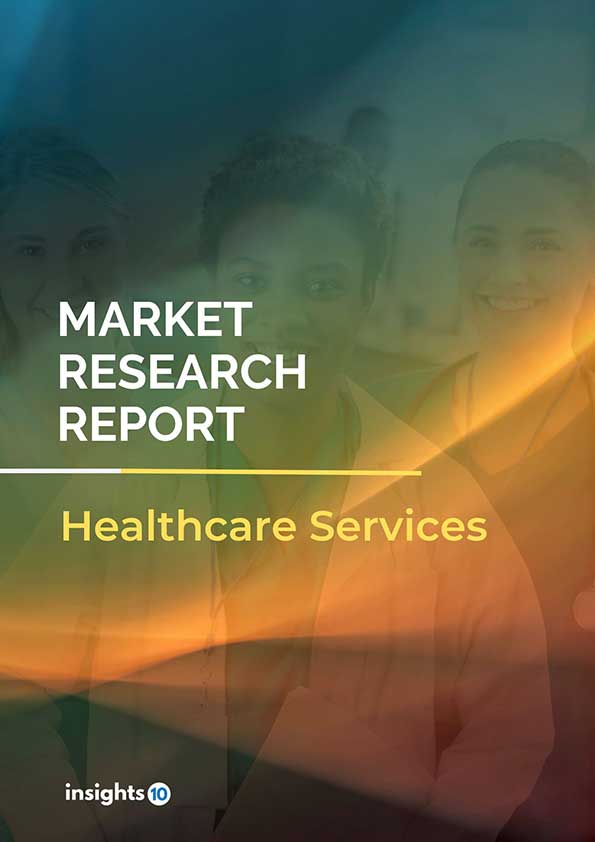Indonesia Artificial Intelligence (AI) in Diagnostics Market Analysis
Indonesia's Artificial Intelligence (AI) in the diagnostics market is projected to grow from $6.0 Mn in 2022 to $xx Mn by 2030, registering a CAGR of xx% during the forecast period of 2022-2030. The market will be driven by rising privatization in Indonesia and increasing adoption of AI technology in the country. The market is segmented by component & by diagnosis. Some of the major players include IBM Watson Health, Siemens Healthineers & Philips Healthcare.
Buy Now

Indonesia Artificial Intelligence (AI) in Diagnostics Market Executive Summary
The Indonesia Artificial Intelligence (AI) in the diagnostics market is projected to grow from $6.0 Mn in 2022 to $xx Mn by 2030, registering a CAGR of xx% during the forecast period of 2022 - 2030. According to the CIA World Factbook, 20.88 million Indonesians will have reached the age of 65 in 2020. By 2025, the elderly would account for 12.5% of the Indonesian population, a 45% increase from 2015. In Indonesia, the most common NCDs (noncommunicable diseases) include hypertension, heart disease, bronchial asthma, chronic kidney failure, diabetes, stroke, and cancer. The most lethal illnesses in 2019 were stroke, ischemic heart disease, and diabetes, all of which increased by double-digit percentages from a decade earlier in 2009.
Tuberculosis (TB) is a major issue in Indonesia, with incidence and mortality rates 100 times greater than in low-burden nations in the area. Researchers from the University of Indonesia and the Bandung Institute of Technology have built an AI system that can accurately identify tuberculosis from chest X-rays. The University of Indonesia has devised an AI system that can diagnose diabetic retinopathy from retinal scans with an accuracy rate of more than 90%. Moreover, the country is also making progressive research in the field of breast cancer detection, and prediction of dengue fever outbreaks by analyzing environmental and climatic data and also during the COVID outbreak to monitor patients remotely.
Market Dynamics
Market Growth Drivers
In Indonesia, the number of hospitals and clinics is increasing, but consumer expenditure in other sectors is declining. The government supports private sector participation in hospital development. This indicates the demand for advanced medical technology in order to provide high-quality healthcare services. Indonesia implemented local content restrictions in June 2021, prohibiting the import of over 5,400 foreign medical equipment goods in 79 categories from the LKPP e-Katalog public procurement system used by hospitals and clinics. Only locally produced medical equipment certified to have 40% local content will be featured in the e-Catalogue system for those 79 categories.
Market Restraints
Many market constraints may impede the use of Artificial Intelligence (AI) in Diagnostics in Hong Kong. The lack of a legal framework for AI, causes businesses uncertainty and hesitation to employ AI solutions. Data privacy and security concerns make it difficult for healthcare professionals to acquire and evaluate sensitive medical data. Smaller healthcare providers or new competitors to the market may be put off by the high expense of deployment. Lastly, the conventional healthcare business is frequently reluctant to change, and healthcare providers may be unwilling to implement new technology such as AI-based diagnostics.
Competitive Landscape
Key Players
- IBM Watson Health
- Siemens Healthineers
- Philips Healthcare
- GE Healthcare
- Google Health
- AliveCor, Inc.
- Riverain Technologies
- Ping An Technology
- iCarbonX
- Niramai
- Nalagenetics
Healthcare Policies and Regulatory Landscape & Reimbursement Scenario
The Indonesian government developed a national AI policy in 2020 with the goal of making Indonesia a worldwide AI center. Initiatives to assist the development of AI technology, notably in the healthcare industry, are part of the plan.
The Ministry of Health is in charge of all reimbursement procedures. As a result, individuals insured by public healthcare insurance may obtain healthcare services without financial difficulty. In essence, public sector hospitals and other public healthcare institutions offer treatments at a reduced or no cost. Hospitals are reimbursed on a fee-for-service basis under private and other public healthcare programs. Discussions between the insurance company and the healthcare provider are crucial in deciding the amount of payment.
1. Executive Summary
1.1 Digital Health Overview
1.2 Global Scenario
1.3 Country Overview
1.4 Healthcare Scenario in Country
1.5 Digital Health Policy in Country
1.6 Recent Developments in the Country
2. Market Size and Forecasting
2.1 Market Size (With Excel and Methodology)
2.2 Market Segmentation (Check all Segments in Segmentation Section)
3. Market Dynamics
3.1 Market Drivers
3.2 Market Restraints
4. Competitive Landscape
4.1 Major Market Share
4.2 Key Company Profile (Check all Companies in the Summary Section)
4.2.1 Company
4.2.1.1 Overview
4.2.1.2 Product Applications and Services
4.2.1.3 Recent Developments
4.2.1.4 Partnerships Ecosystem
4.2.1.5 Financials (Based on Availability)
5. Reimbursement Scenario
5.1 Reimbursement Regulation
5.2 Reimbursement Process for Diagnosis
5.3 Reimbursement Process for Treatment
6. Methodology and Scope
Artificial Intelligence (AI) in Diagnostics Market Segmentation
- By Component Outlook Type (Revenue, USD Billion):
- Software
- Hardware
- Services
- By Diagnosis Outlook Type (Revenue, USD Billion):
- Cardiology
- Oncology
- Pathology
- Radiology
- Chest and Lung
- Neurology
- Others
Methodology for Database Creation
Our database offers a comprehensive list of healthcare centers, meticulously curated to provide detailed information on a wide range of specialties and services. It includes top-tier hospitals, clinics, and diagnostic facilities across 30 countries and 24 specialties, ensuring users can find the healthcare services they need.
Additionally, we provide a comprehensive list of Key Opinion Leaders (KOLs) based on your requirements. Our curated list captures various crucial aspects of the KOLs, offering more than just general information. Whether you're looking to boost brand awareness, drive engagement, or launch a new product, our extensive list of KOLs ensures you have the right experts by your side. Covering 30 countries and 36 specialties, our database guarantees access to the best KOLs in the healthcare industry, supporting strategic decisions and enhancing your initiatives.
How Do We Get It?
Our database is created and maintained through a combination of secondary and primary research methodologies.
1. Secondary Research
With many years of experience in the healthcare field, we have our own rich proprietary data from various past projects. This historical data serves as the foundation for our database. Our continuous process of gathering data involves:
- Analyzing historical proprietary data collected from multiple projects.
- Regularly updating our existing data sets with new findings and trends.
- Ensuring data consistency and accuracy through rigorous validation processes.
With extensive experience in the field, we have developed a proprietary GenAI-based technology that is uniquely tailored to our organization. This advanced technology enables us to scan a wide array of relevant information sources across the internet. Our data-gathering process includes:
- Searching through academic conferences, published research, citations, and social media platforms
- Collecting and compiling diverse data to build a comprehensive and detailed database
- Continuously updating our database with new information to ensure its relevance and accuracy
2. Primary Research
To complement and validate our secondary data, we engage in primary research through local tie-ups and partnerships. This process involves:
- Collaborating with local healthcare providers, hospitals, and clinics to gather real-time data.
- Conducting surveys, interviews, and field studies to collect fresh data directly from the source.
- Continuously refreshing our database to ensure that the information remains current and reliable.
- Validating secondary data through cross-referencing with primary data to ensure accuracy and relevance.
Combining Secondary and Primary Research
By integrating both secondary and primary research methodologies, we ensure that our database is comprehensive, accurate, and up-to-date. The combined process involves:
- Merging historical data from secondary research with real-time data from primary research.
- Conducting thorough data validation and cleansing to remove inconsistencies and errors.
- Organizing data into a structured format that is easily accessible and usable for various applications.
- Continuously monitoring and updating the database to reflect the latest developments and trends in the healthcare field.
Through this meticulous process, we create a final database tailored to each region and domain within the healthcare industry. This approach ensures that our clients receive reliable and relevant data, empowering them to make informed decisions and drive innovation in their respective fields.
To request a free sample copy of this report, please complete the form below.
We value your inquiry and offer free customization with every report to fulfil your exact research needs.
The two major drivers of Artificial Intelligence (AI) in the Diagnostics market in Indonesia are:
- Rising privatization in Indonesia
- Increasing adoption of AI technology in the country
IBM Watson Health, Siemens Healthineers, Philips Healthcare, GE Healthcare, Google Health, AliveCor, Inc., Riverain Technologies, Ping An Technology, iCarbonX, Niramai & Nalagenetics are the major players of the Artificial Intelligence (AI) in the diagnostics market in Indonesia.
Artificial Intelligence (AI) in the diagnostics market in Indonesia is segmented by component and by diagnosis.









































